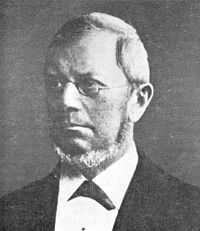Gustav Spörer

Friederich Wilhelm Gustav Spörer (23 October 1822 – 7 July 1895) was a German astronomer.
He is noted for his studies of sunspots and sunspot cycles. In this regard he is often mentioned together with Edward Maunder. Spörer was the first to note a prolonged period of low sunspot activity from 1645 to 1715. This period is known as the Maunder Minimum.
Spörer was a contemporary of Richard Christopher Carrington, an English astronomer. Carrington is generally credited with discovering Spörer's law, which governs the variation of sunspot latitudes during the course of a solar cycle. Spörer added to Carrington's observations of sunspot drift and is sometimes credited with the discovery.
The Spörer minimum was a period of low sunspot activity from roughly 1420 to 1570.
Life
From 1833 to 1840 Spörer attended Friedrich-Wilhelms-Gymnasium in Berlin and afterwards studied mathematics and natural history at Berliner Universität until 1843. He gained his doctorate on 14. December 1843 with a work on a comet of 1723 – his supervisor being Johann Franz Encke.
From 1844 he worked at the New Berlin Observatory, whose first director was Encke.
External links
|